Solo Game Development Focusing on Environmental Storytelling, Level, and Architectural Design
Site / Local Train, Taiwan Railway
Type / Video Game Design, 2020
Website / https://danny-huang.itch.io/way-to-work
/ Individual Project
Software/ Unity, 3ds Max, Marmoset Toolbag, V-ray, Illustrator, Photoshop
Way to work is an Unity game project that try to depict my past experience and thoughts about work life, transforming them into an environment art and interactive story. I take the train commute period as the main experience because that is the time I'll think the most about past, life, and future.
| Game General Concept
I divided the game scenes into every train stations and put my thoughts and scenarios about life into intervals between stations. These scenes correspond to different kinds of topics in my life, including:
1. Working Life
2. Architectural Education
3. Environment and Spatial Design
4. Future Career
5. The Moment of Change
| Prologue - Home
The morning starts from a house in town. I try to use wooden elements, utility poles, and other traditional elements making guidance and the traditional vibes.
| Home Imagination -Concept Art
I make the house a place to feel the gradation of light, using successive and open passages to mingle the interior and the exterior with semi-outdoor spaces. The house combines wood, bamboo, tiles, and fabric texture, juxta positioning traditions and moderns, making the Western-Asian eclectic atmosphere.
| Level Design Process
Level Overall Design
I designed a straightforward linear level with guidance (e.g., lighting poles and lanterns) for the first scene in the game, focusing more on the experience in the house and getting familiar with the navigation.
Street view changes from housing to commercial buildings when approaching the train station.
Environment Art
The street view combines common visual elements in Taiwan and Japan. For instance, 2-3 stories residential and commercial hybrid building. The interior design of the house draws on Asian-Western eclectic elements and mingle the modern and historical patterns.
House Design
I designed the room space based on traditional Japanese style layout arrangement but more intricate to shape and divide the exterior into three gathering areas with distinctive functions.
The design of Engawa( ring veranda) makes the game circulation a continual and engaging experience through various light and shade conditions, allowing players to familiar with the relationship between publicity and light intensity.
| Home - In-game Experience (Unity Screenshot)
Home is the intro of my everyday story.
The red of the house is the beginning of the day.
The interior is tranquil, slow, and mild.
The light from the outside world leads my way to start my working day.
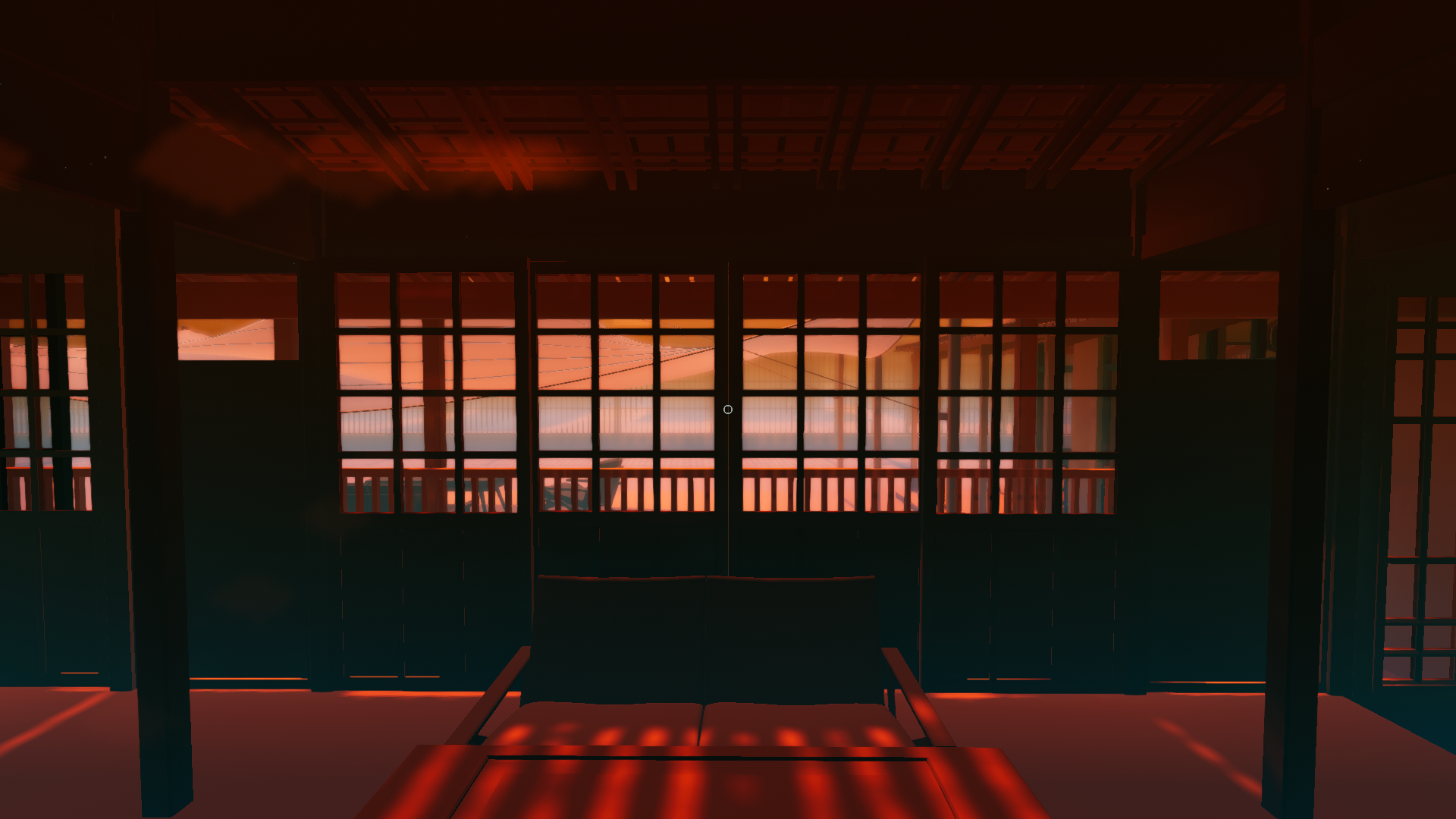
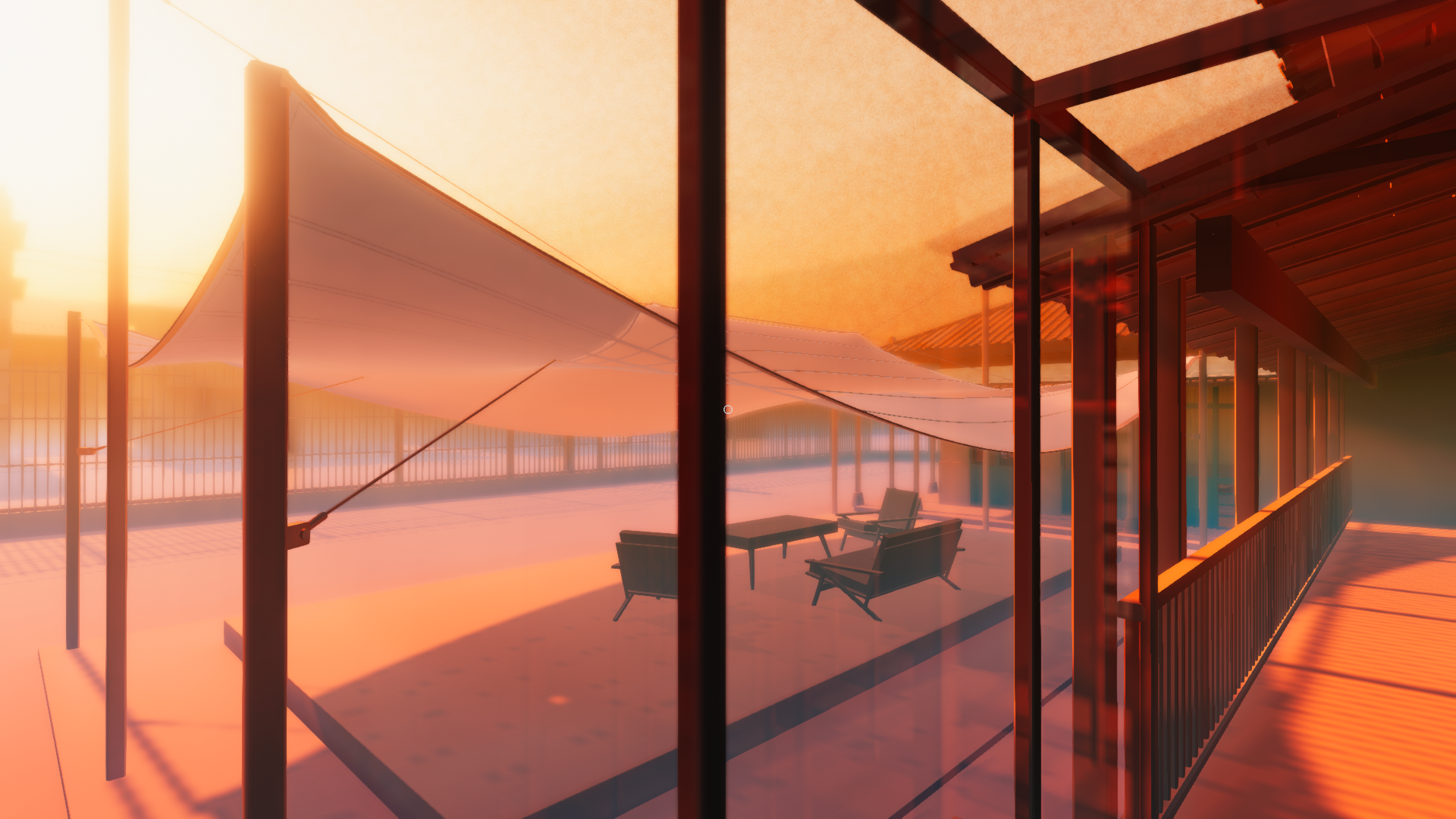
| Prologue - Home (Street)
Morning light lights up my path to work. Stretching cables, poles, and lanterns are my benchmark for my movement.
The dim train station is my wait before work, and its shadow is my clock and daily scenery.
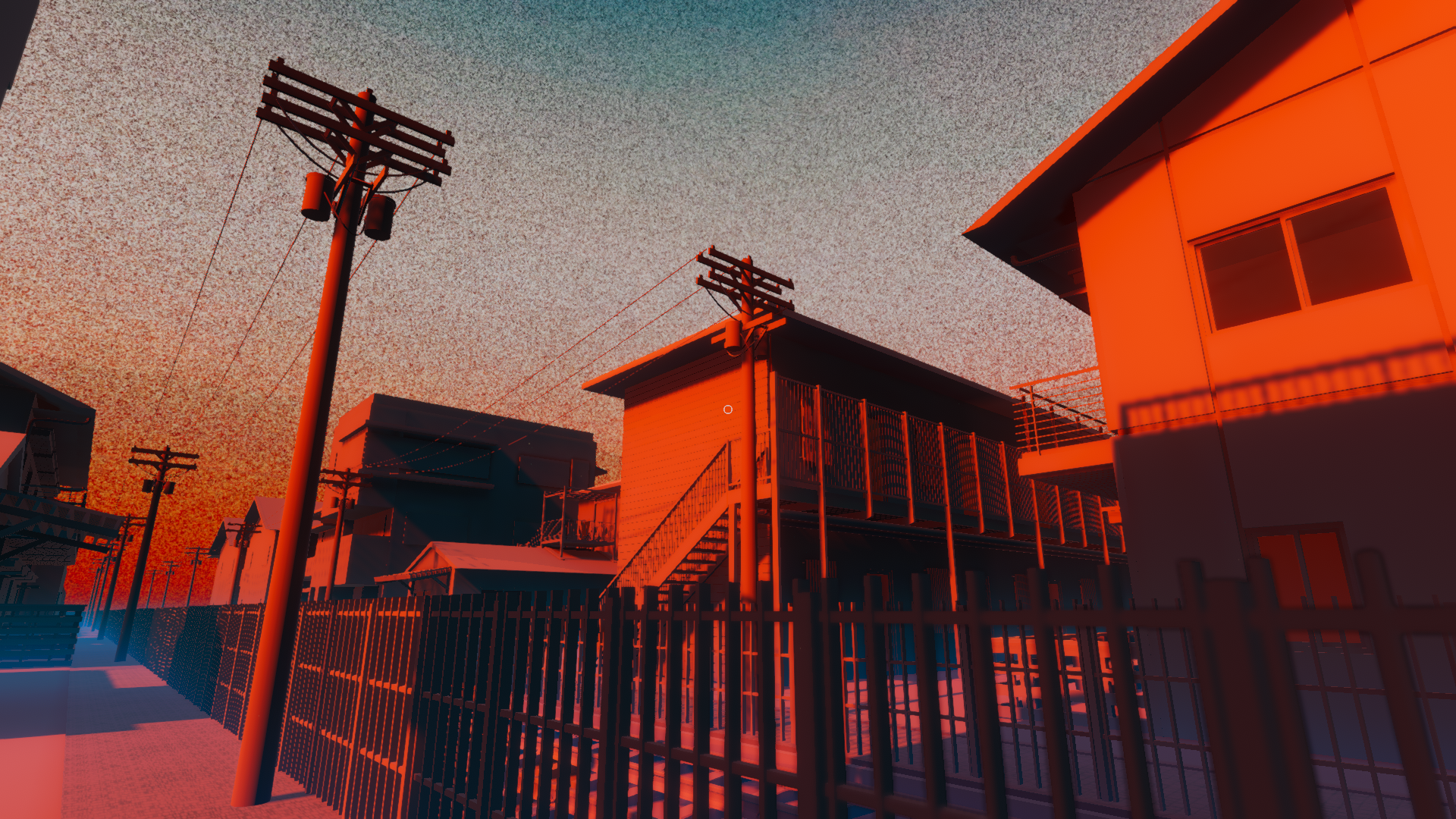
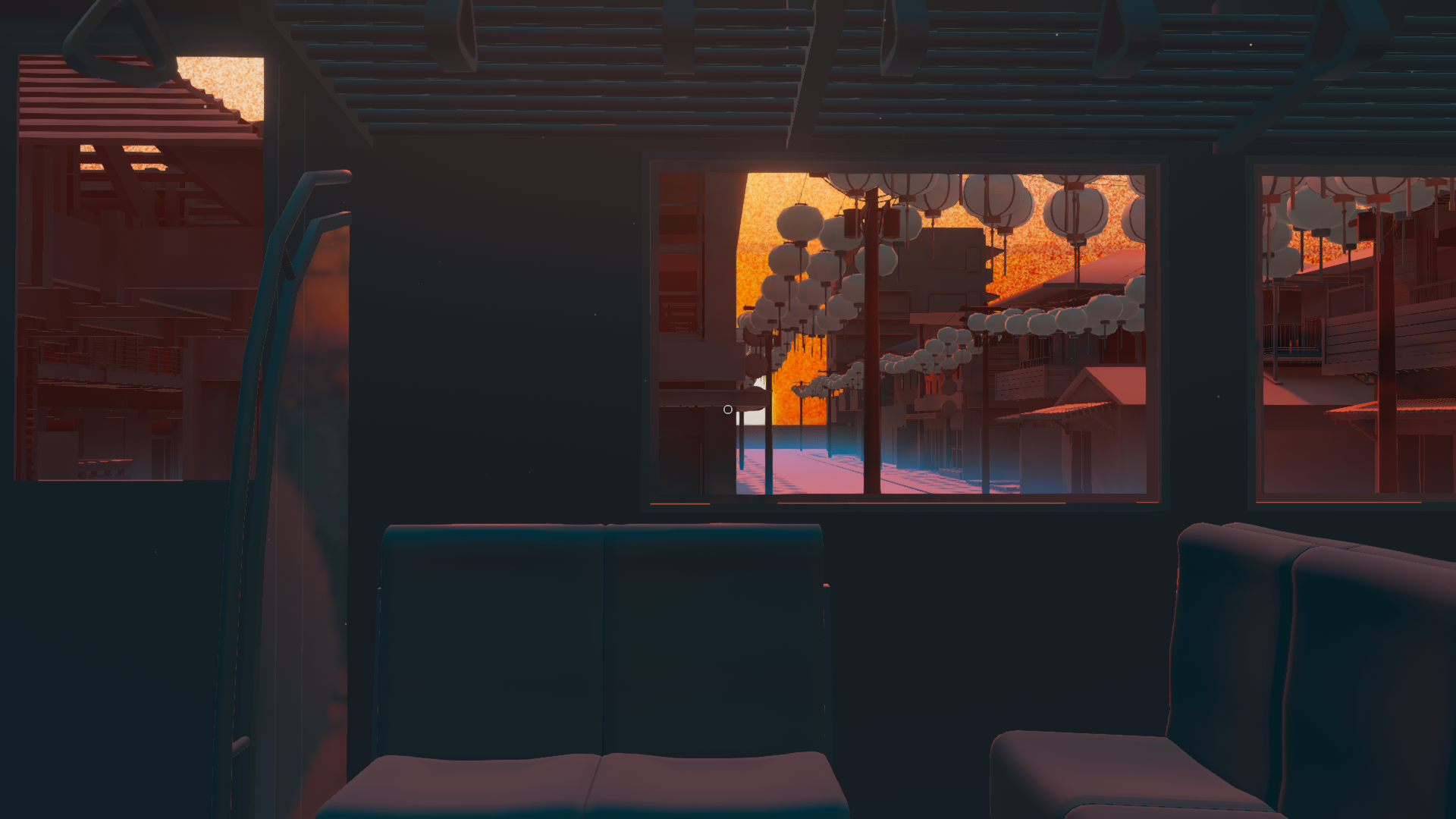
| First Scene - Tea Factory
I drew the outline and composition of places I've been, feel the light and shadow of them, and further reimagine the district layout and formation of its architectures. My objective is to visualize these experiences into spatial design, provide players with vivid visuals about my comprehension about architectural design.
| Tea Factory - Concept Art
I developed the scene with traditional elements and regional contexts. The scene try to demonstrate frames, members, and the building's structural behaviors. I also try to utilize these spaces to demonstrate light and shade, the definition of interior and exterior, and the sense of place.
| Level Design Process
Level Development
1. Plan the level length around 6 minutes (according to my actual train travel time), estimate the possible move distance, corresponding map size, and building clusters.
2. Considering the possibility of repeating the detour, I reduce the map size by half, setting the minimum clearance time to 2 minutes.
Level Exploration Scenarios
The level starts from the train station, and following with the ritual of crossing the river through the suspension bridge.
Canopies with intricate structures and shades connect the open spaces to building exteriors. All interior spaces have numerous arrayed openings to connect the lighting environment and scene with exterior spaces.
Look Development and Environment Layout
The level includes continuous and enclosed looping circulations surrounded by buildings, making the level rewarding if player keeps exploring.
I take the 1950s Taiwanese tea factory as the primary prototype. I try to define the nostalgic vibe and activities through the wooden structures and follows traditional tea production procedure and respective machines.
All the linear paths have distinctive traditional market streets characteristics. Further, I put the assets into different streets according to their functions, mingling commercial and residential uses by using similar assets with arrangement variations.
| Tea Factory - In-game Experience (Unity Screenshot)
The station situates in a valley surrounded by morning mist.
Repetitive elements and members create a pattern leading you forward to the hidden objects.
The gradient from blue to orange mingles the traditional architectural vibe with mountainous environment.
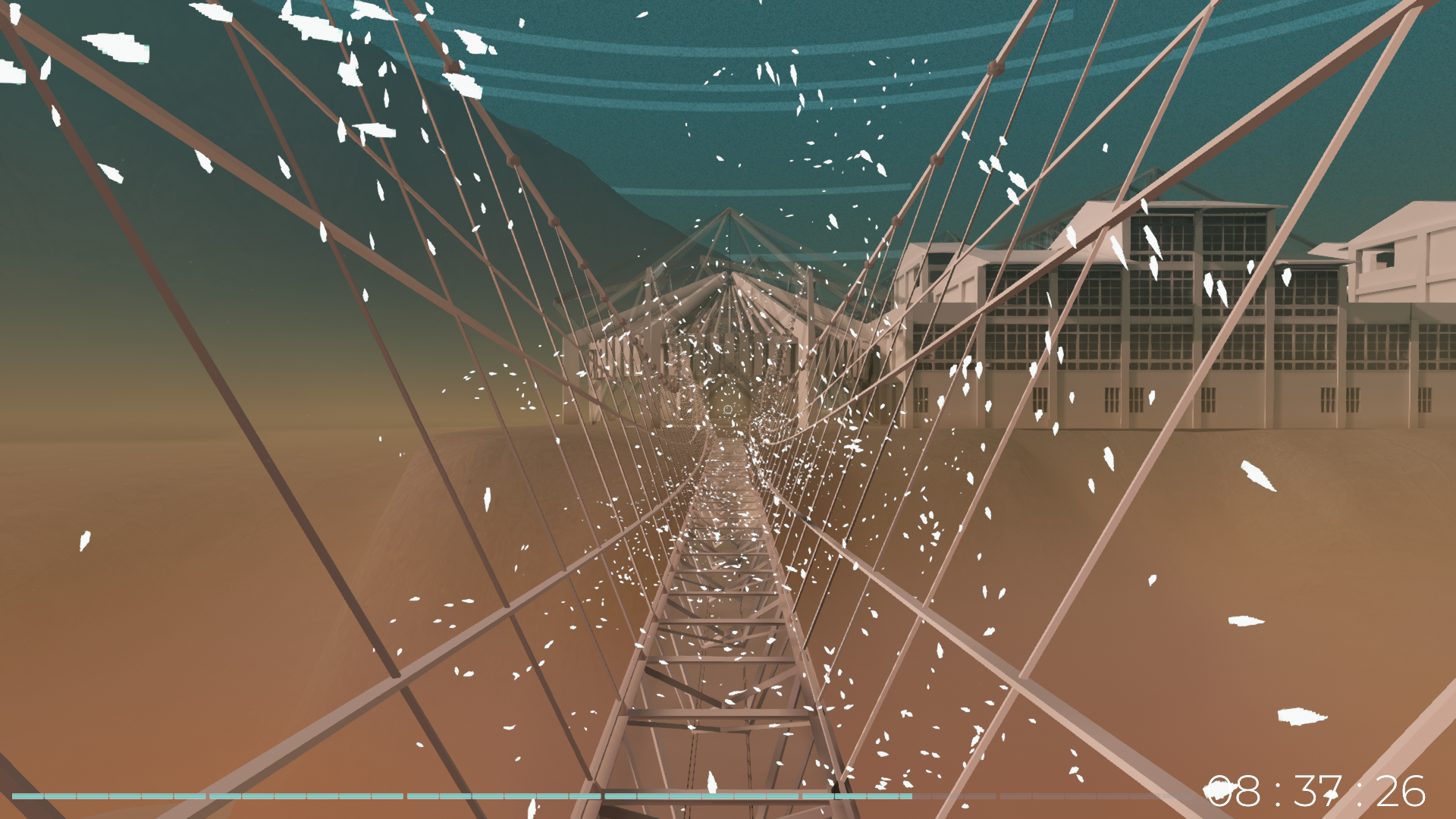
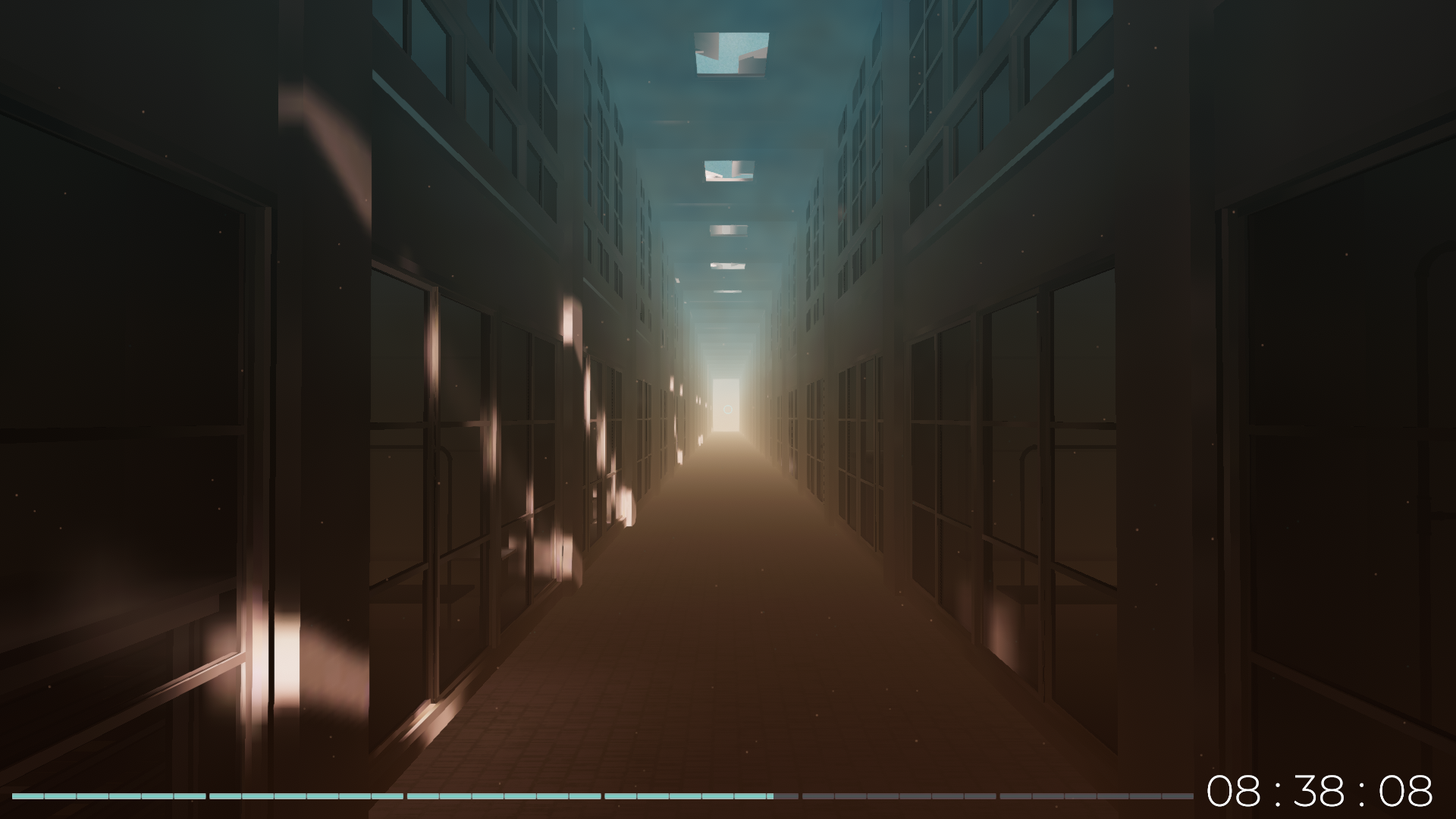
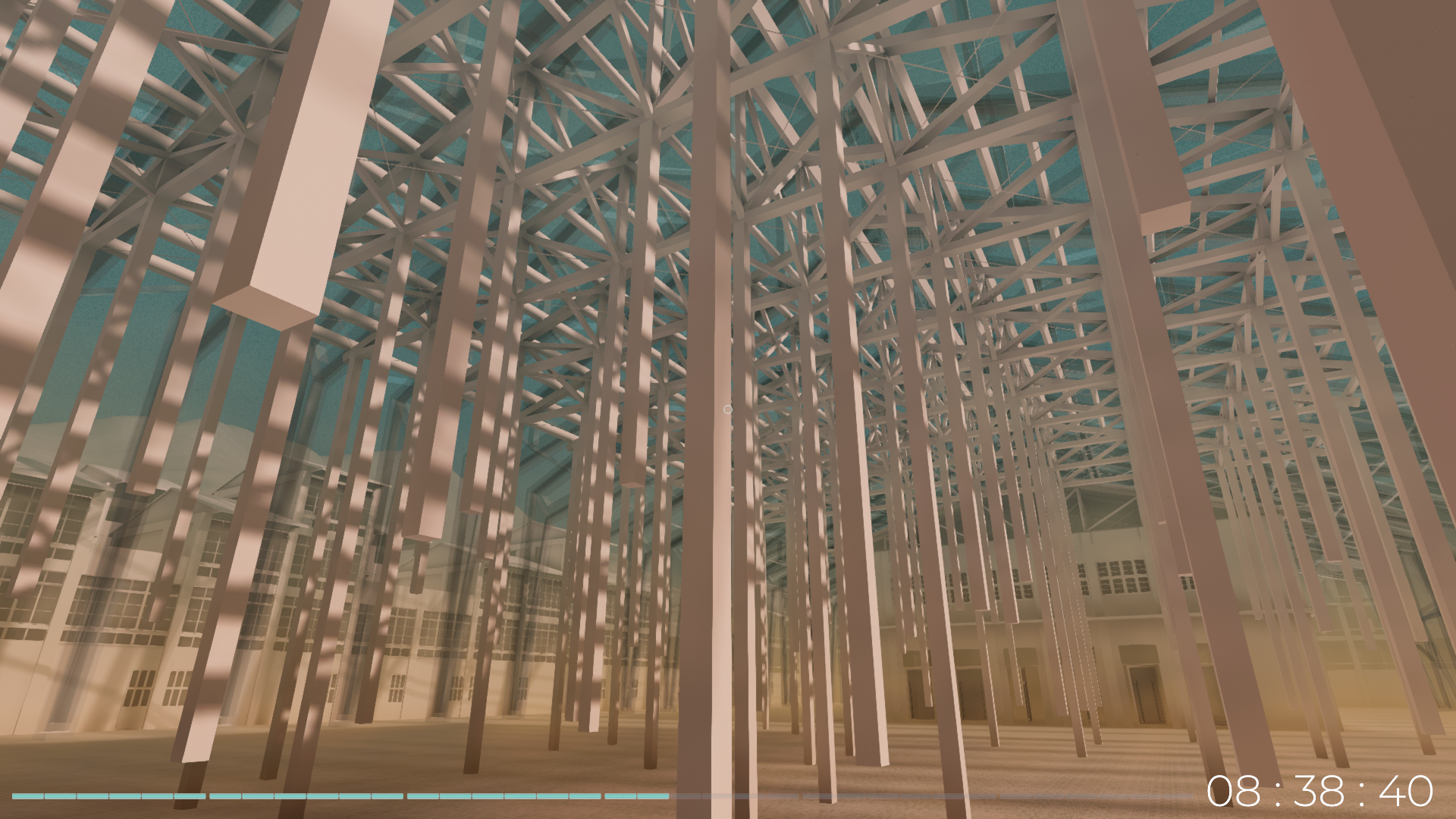
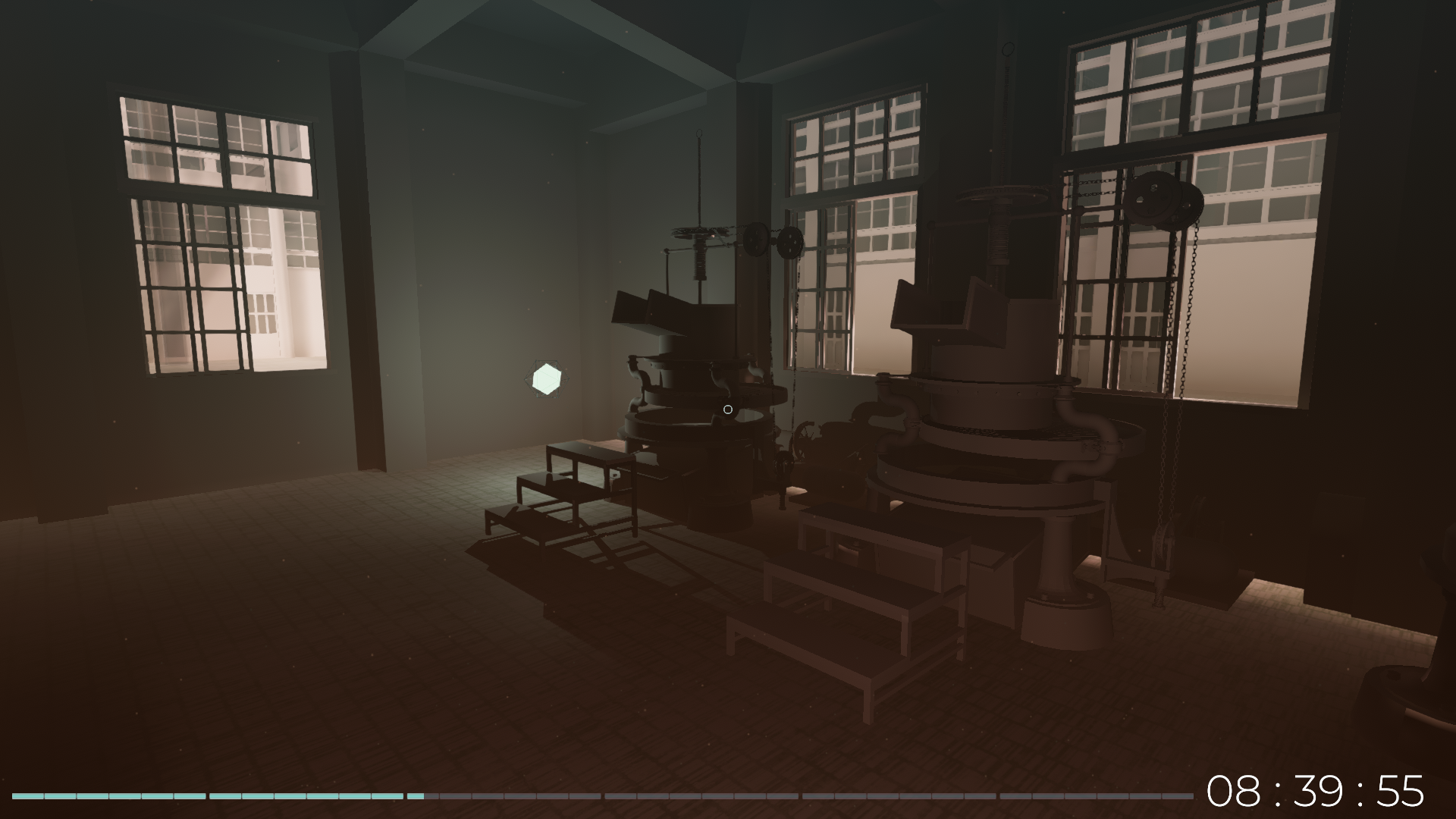
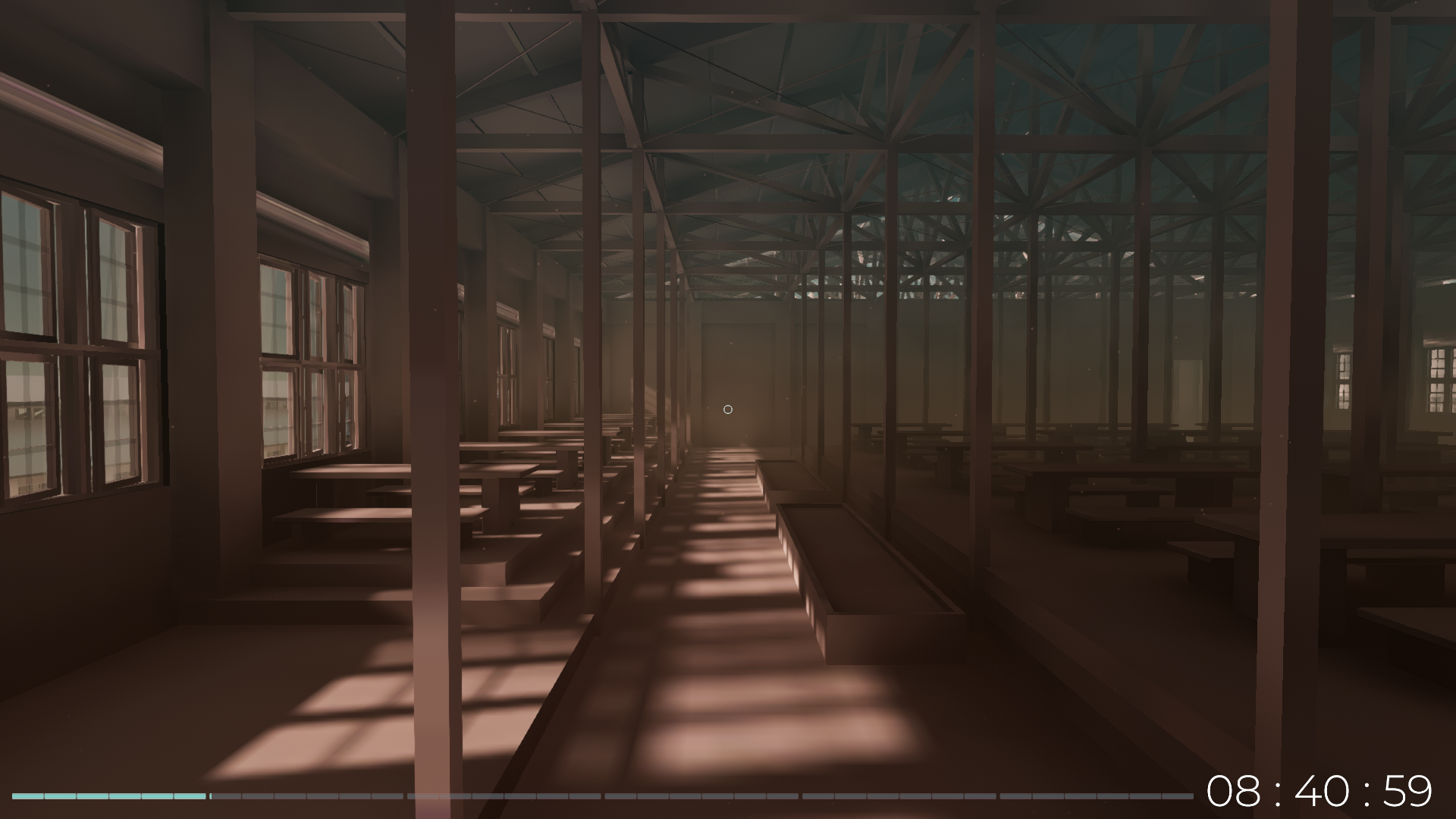
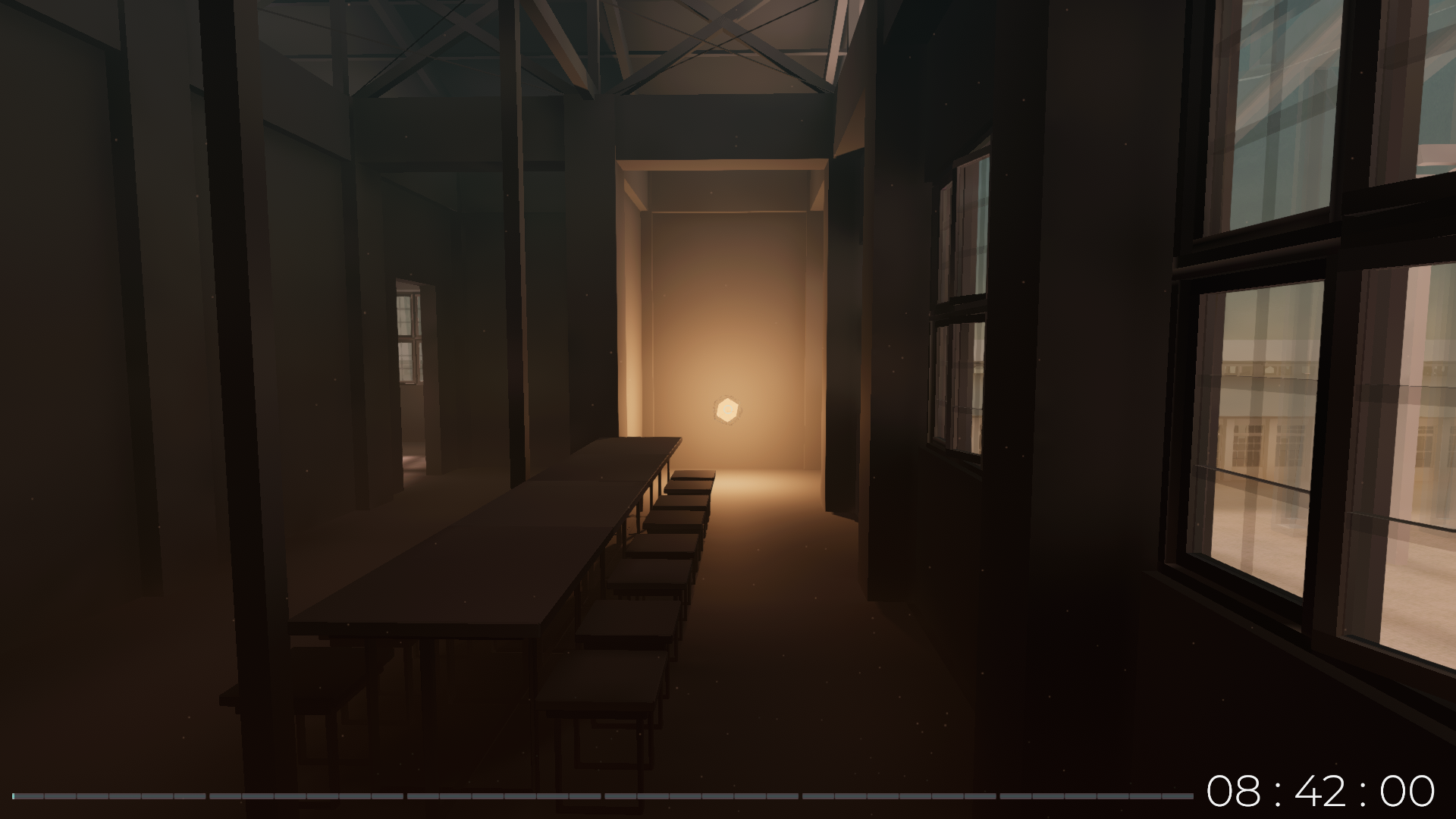
| Transition Scene - Tea Factory
The whole game experience starts from my everyday commutes on the train. Thus, I depicted my daydreaming about
the moods and issues in my life and mingling them into the cool color train.
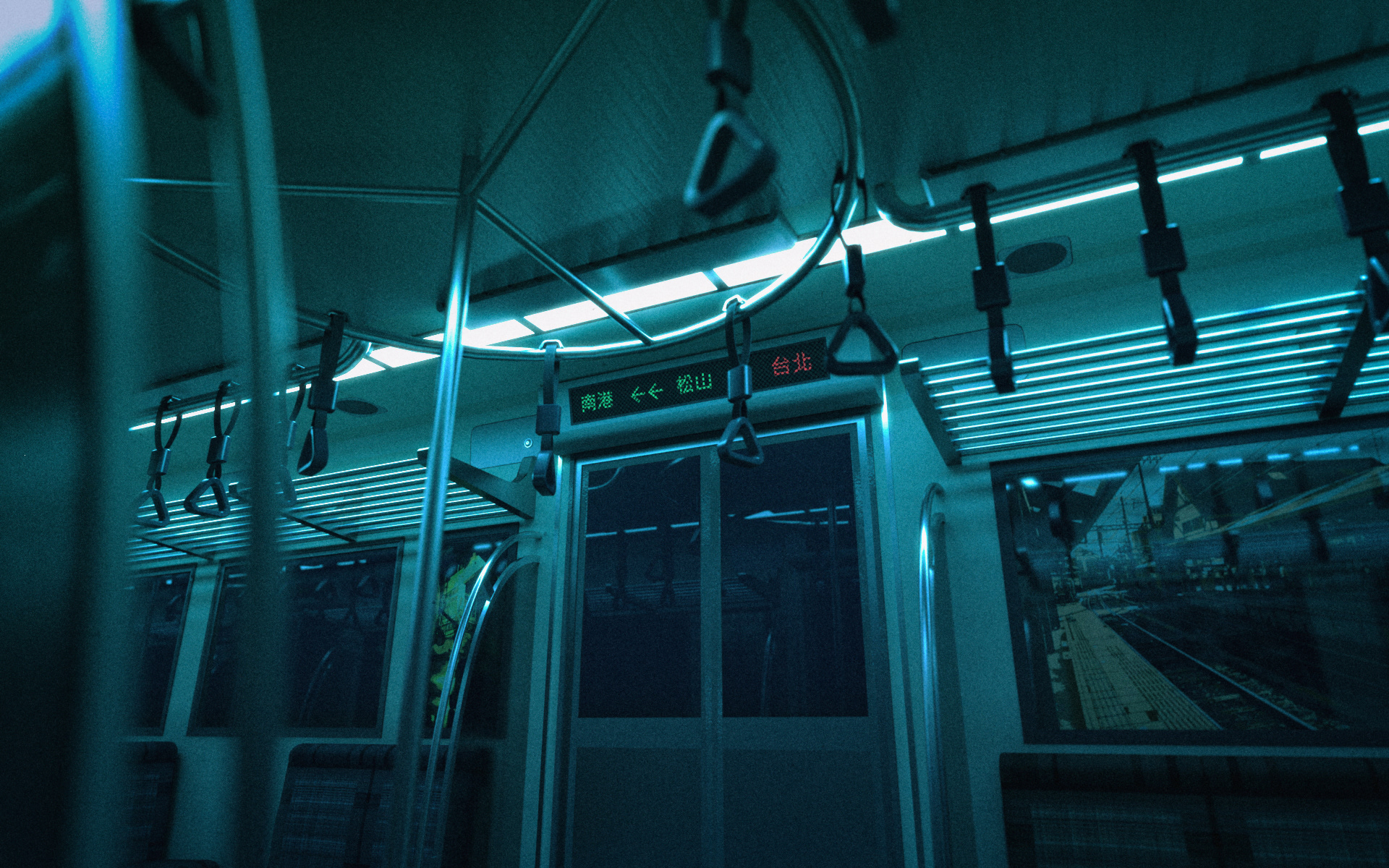
Train Design
I design the train level a one coach long linear path. Only focus on building one mood or atmosphere at a time. Starts from experience the vibe at first standing area; to interact with small objects in the seating area; and find the path to the next scene at last standing area.
| Concepts and Implications in Transition Scenes
T1_Wetland
C
T2_Festive
The festive theme is the way I show our career. The pros represents all the fancy incentives in the work environment. Most of us would gradually get lost and start to pandering to them.
T3_ Illusion
The scene depict the struggles in our lives, emphasizing our fear and difficulties to moving forward.
| In-game Experience - Wetland (Unity Screenshot)
I use emissive contrast colors between sun orange and aqua blue to simply the concept art, and make most of the hard surface reflective to reproduce the dreamlike environment.